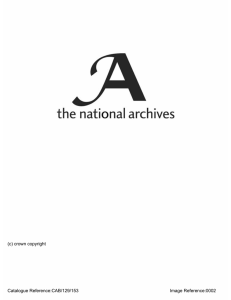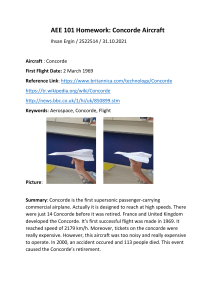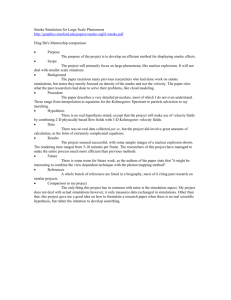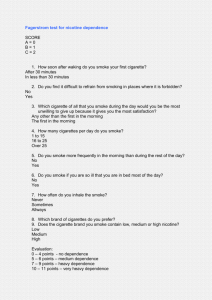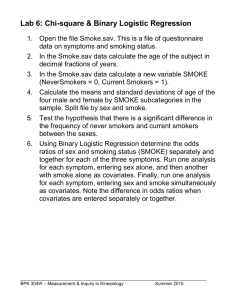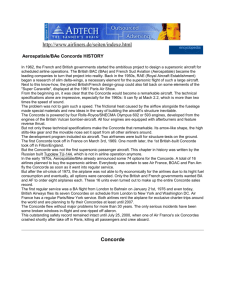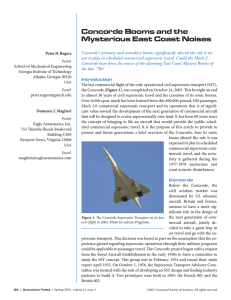BAC Concorde Type 1 Variant 102, G-BOAC
advertisement
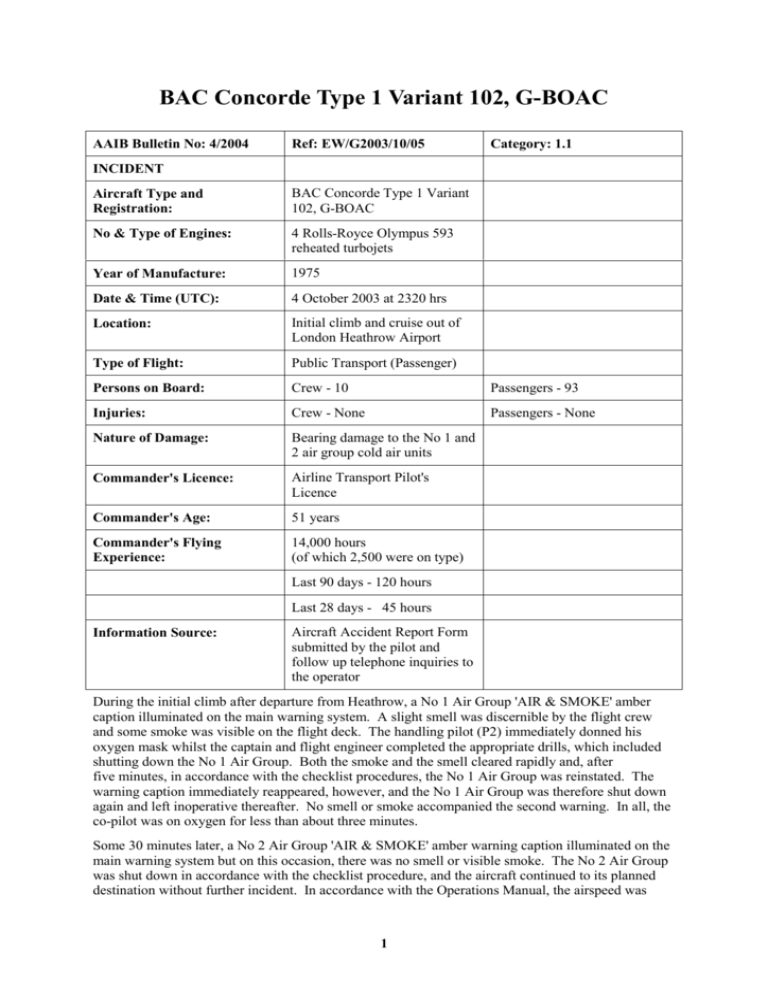
BAC Concorde Type 1 Variant 102, G-BOAC AAIB Bulletin No: 4/2004 Ref: EW/G2003/10/05 Category: 1.1 INCIDENT Aircraft Type and Registration: BAC Concorde Type 1 Variant 102, G-BOAC No & Type of Engines: 4 Rolls-Royce Olympus 593 reheated turbojets Year of Manufacture: 1975 Date & Time (UTC): 4 October 2003 at 2320 hrs Location: Initial climb and cruise out of London Heathrow Airport Type of Flight: Public Transport (Passenger) Persons on Board: Crew - 10 Passengers - 93 Injuries: Crew - None Passengers - None Nature of Damage: Bearing damage to the No 1 and 2 air group cold air units Commander's Licence: Airline Transport Pilot's Licence Commander's Age: 51 years Commander's Flying Experience: 14,000 hours (of which 2,500 were on type) Last 90 days - 120 hours Last 28 days - 45 hours Information Source: Aircraft Accident Report Form submitted by the pilot and follow up telephone inquiries to the operator During the initial climb after departure from Heathrow, a No 1 Air Group 'AIR & SMOKE' amber caption illuminated on the main warning system. A slight smell was discernible by the flight crew and some smoke was visible on the flight deck. The handling pilot (P2) immediately donned his oxygen mask whilst the captain and flight engineer completed the appropriate drills, which included shutting down the No 1 Air Group. Both the smoke and the smell cleared rapidly and, after five minutes, in accordance with the checklist procedures, the No 1 Air Group was reinstated. The warning caption immediately reappeared, however, and the No 1 Air Group was therefore shut down again and left inoperative thereafter. No smell or smoke accompanied the second warning. In all, the co-pilot was on oxygen for less than about three minutes. Some 30 minutes later, a No 2 Air Group 'AIR & SMOKE' amber warning caption illuminated on the main warning system but on this occasion, there was no smell or visible smoke. The No 2 Air Group was shut down in accordance with the checklist procedure, and the aircraft continued to its planned destination without further incident. In accordance with the Operations Manual, the airspeed was 1 BAC Concorde Type 1 Variant 102, G-BOAC adjusted to maintain the external skin temperature within permitted limits with the second Air Group shut down, which necessitated a slight reduction to Mach 1.97. At no stage was there any discernible smell or smoke in the passenger cabin. The aircraft was designed with four Air Groups, with each being supplied with bleed air from engines one to four respectively. Investigation of the cold air units in the No 1 and 2 Air Groups revealed evidence on both units consistent with oil seal diaphragm and bearing failure. In light of the fact that Concorde has since been withdrawn from service, no further investigation or rectification of these units was considered necessary. 2
